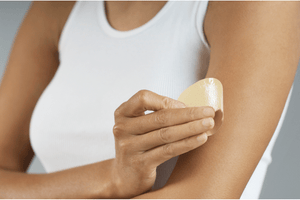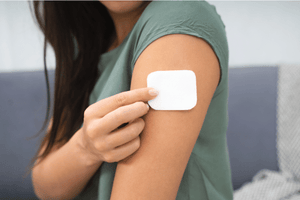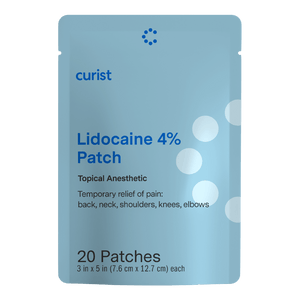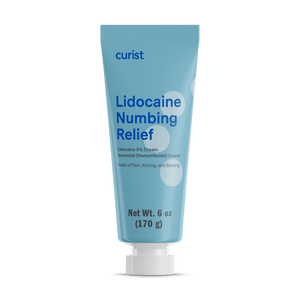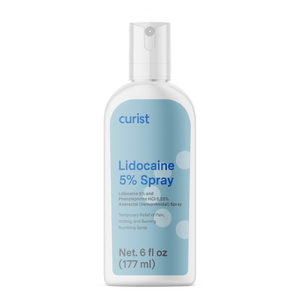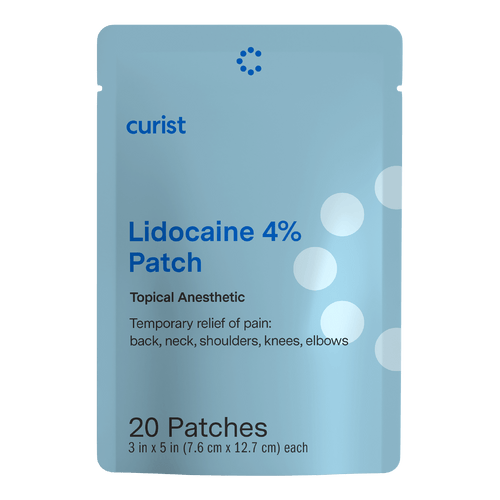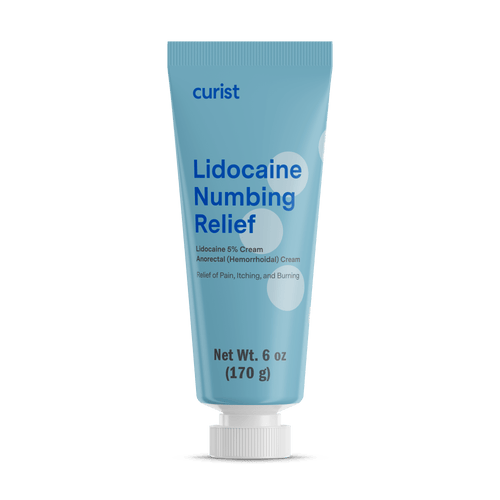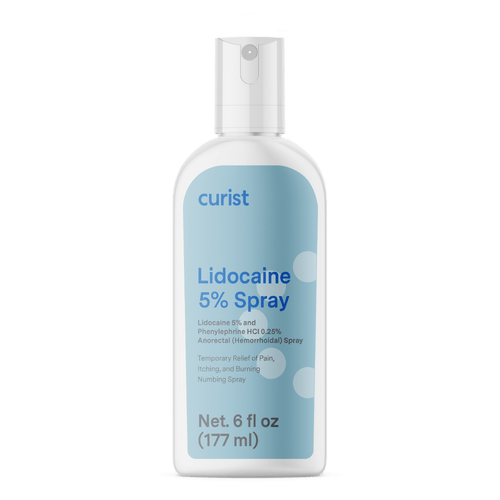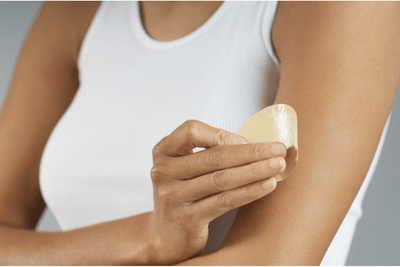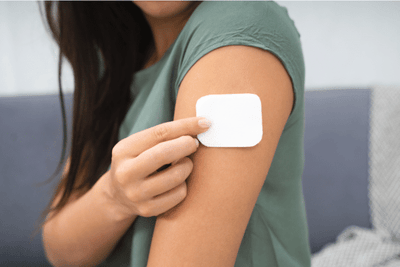By Amelia McGill, The University of Texas at Austin College of Pharmacy
Curist delivers over-the-counter medicines to your door at a fraction of the price of traditional brands. We hope everyone stays safe and healthy during this time.
What is Lidocaine? How does Lidocaine Work?
Lidocaine is a type of anesthetic, and can temporarily limit sensations or pain. Topical lidocaine products can be bought over the counter at various strengths or concentrations.
Lidocaine works by temporarily blocking nerve endings to limit sensations. Therefore, individuals can use lidocaine (at the 4% strength) to relieve burning or itching, such as the sensations caused by nerve pain, sore muscles, sunburn, insect bites, and other minor ailments. However, lidocaine will not treat the underlying condition that causes the unwanted pain or itchiness.
Please note that for over-the-counter use, lidocaine at the 5% strength should not be used for topical use on the body, and should only be used for anorectal or hemorrhoidal use.
What are the Differences Between Lidocaine Cream vs Lidocaine Ointment vs Lidocaine Patch vs Lidocaine Spray vs Lidocaine Roll On?
Lidocaine is available in a variety of dosage forms (applicator types), for instance as lidocaine creams, lidocaine ointments, lidocaine patches, lidocaine sprays, and lidocaine roll ons. These lidocaine products all relieve pain or itching directly at the application site by numbing; however, each product has some critical differences.
Before using any of these products, it is essential to have clean and dry hands and skin. Do not apply any lidocaine product on an open wound, severe burn, and cracked or inflamed skin without a physician's order.
Please note that for over-the-counter use, lidocaine at the 5% strength should not be used for topical use on the body, and should only be used for anorectal or hemorrhoidal use.
Lidocaine Cream
Lidocaine cream is applied by rubbing the cream onto the treatment site. Lidocaine cream has a semi-thick consistency and is easy to apply and massage. Its effects can be felt within 30 minutes and last up to approximately 3 hours. Please note that for over-the-counter use, lidocaine at the 5% strength should not be used for topical use on the body, and should only be used for anorectal or hemorrhoidal use.
Lidocaine Ointment
Similarly, lidocaine ointment is applied by rubbing the ointment onto the treatment site. However, ointments are oil-based; therefore, lidocaine ointment has a thick, greasy consistency. Lidocaine ointments will stay on the skin for an extended period and can provide added barrier protection for sensitive sites.
Lidocaine Patches
Lidocaine patches are applied to the site of the pain or itching. The lidocaine patch has an adhesive that helps it stick and it will slowly deliver the medicine over an extended period. Lidocaine patches should not be used on open wounds or along with a heating pad, as the heat will cause more medicine to absorb into the skin. Additionally, patches should stay dry before and during use. Patches are an excellent alternative for areas that are hard to reach with creams or ointments, such as an area usually covered with clothing. They can be used for 8 to 12 hours per application (depending on the specific product) or up to 3 times daily.
Lidocaine Spray
Lidocaine spray is sprayed onto the skin at the treatment site. A lidocaine spray may be preferred if the site is painful to the touch, because a spray is a gentle mist. Lidocaine will begin working quickly. Please note that for over-the-counter use, lidocaine spray at the 5% strength should not be used for topical use on the body, and should only be used for anorectal or hemorrhoidal use.
Lidocaine Roll On
Lidocaine roll on is applied directly onto the treatment area using the rolling applicator. The roll on formulation is a no-mess alternative to some of the other formulations.
Pros and Cons of Different Lidocaine Products
|
Product |
Pros |
Cons |
|
All Lidocaine Products |
Can help temporarily relieve pain or itching |
Will not treat or cure underlying cause of conditions |
|
Lidocaine Cream |
|
|
|
Lidocaine Ointment |
|
|
|
Lidocaine Patch |
|
|
|
Lidocaine Spray |
|
|
|
Lidocaine Roll On |
|
|
Please note that for over-the-counter use, lidocaine at the 5% strength should not be used for topical use on the body, and should only be used for anorectal or hemorrhoidal use.
Which Topical Formulation of Lidocaine is the Strongest: Lidocaine Patch, Lidocaine Ointment, Lidocaine Cream, Lidocaine Roll On, or Lidocaine Spray?
All lidocaine formulations have similar strengths, and offer similar relief of pain or itchiness. Most over-the-counter lidocaine products will have a strength of 4% to 5%. This indicates the amount of the active ingredient in the product, or in this case, the amount of analgesic causing relief. Lidocaine creams, lidocaine ointments, lidocaine roll ons, and lidocaine sprays can all be purchased without a prescription up to 5% strength. Please note that for over-the-counter use, lidocaine at the 5% strength should not be used for topical use on the body, and should only be used for anorectal or hemorrhoidal use.
Lidocaine patches can be purchased up to 4% strength without a prescription. It should be noted that lidocaine patches typically have longer-lasting effects of up to 12 hours due to the lidocaine’s slower (sustained or extended) release through the patch.
To purchase lidocaine products, check out the Lidocaine Collection at Curist.
Can I Use Lidocaine Products Together?
No, using any two lidocaine products together - whether a lidocaine patch, lidocaine cream, lidocaine ointment, lidocaine spray, or lidocaine roll on - is not recommended. Although each product is safe to use, the combination of lidocaine products together may increase the risk of too much active ingredient (lidocaine) at one time which could have adverse side effects.
Where Can I Buy Lidocaine Products Online?
Lidocaine cream and lidocaine patches can be bought in-store or online at many pharmacies, including Curist.
At Curist, you can buy FDA-approved medications, which will be delivered to your door. To learn more about our products, shop Curist:

